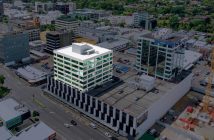First home buyers, residential investors and commercial investors are already taking advantage of the low interest rate environment – but what about commercial and industrial owner occupiers? At this stage we have only witnessed fleeting interest from those owner occupiers, which is probably a reflection of the lumpy or uncertain business environment as a result of Covid-19. At least now with the election out of the way, we should have greater certainty and with housing interest rates predicted to head towards 1.5 percent, it’s a compelling story for small and medium sized businesses. Commercial property has traditionally been a solid investment performer; however, for some it can be perceived as a hard market to enter, with shorter repayment terms than residential, higher interest rates and a greater deposit required for borrowing – hence if you are able to borrow against the house, that just got a whole lot cheaper and easier.
Business owners have a unique opportunity when it comes to commercial property and should look no further than their own premises requirements.
Purchasing a commercial property that your business can operate from can be a great initial investment.
- You are in a position to control your own destiny – you can tailor the property to function for your business’s requirements, as well having security and longevity by controlling the lease (in light of Covid-19, there are some very obvious benefits).
- You also have flexibility, as if or when you go to sell the business, you can hold on to the property as a passive investment for income (providing a far better return on your money than a term deposit).
- If you outgrow the property at some stage, you have the ability to consider selling, or lease it to retain the income (but at least you are on the commercial property ladder).
- Generally speaking, and depending on how long you hold the property for, you can assume that the property will increase in value over time, therefore benefiting from future capital gains (unless the Green Party have a say with their Wealth Tax).
Another advantage is that you are exchanging rent payments for loan repayments and while interest payments can be claimed as an expense, your money is being put towards an asset. Due to Covid-19 and the economic situation, the Official Cash Rate (OCR) has been cut to its lowest level in recorded history, at 0.25 percent. Trading banks have subsequently cut their lending rates, so why not take advantage of this and own your own premises? At the time of writing, there are:
- Retail premises available from $199,000 plus GST (if any)
- Office premises available from $350,000 plus GST (if any)
- Industrial units available from $325,000 plus GST (if any)
An example
Below is a simplified example of the numbers based on an $800,000 purchase of a commercial property for a well trading business, if there was borrowing of 50 percent. Based on borrowing of $400,000 over a 10-year repayment term and assuming an interest rate of 3.5 percent: this would equate to total principal and interest repayments of around $48,000 per annum – cheaper than paying rental.
It is fair to assume that in the current market, a landlord is probably getting around a 5.0-6.0 percent return on their tenanted investment. If you compare the above scenario, then there are clear advantages for an owner-occupier, which will only improve over time as the loan balance decreases. It is not uncommon for commercial loans to be interest only, which could be an option should the business require additional operating capital for a period of time.
A plea to office developers:
While we have seen fairly extensive development of industrial units and suburban retail units for owner occupiers, there has been a distinct shortage of quality stock available for smaller office owner occupiers, particularly in and around the CBD – unfortunately many of the options that do come up from time to time were created in the 1970s, 80s, 90s and are generally of a pretty poor quality, both in terms of the building itself and the fitouts.
I have said for some time and also talked to a number of developers about this market and suggested that if we are to increase the occupier mix and diversity within the CBD, then this would be a good place to start, particularly in the 50sqm-250sqm occupancy range.
There is a niche here that has not been filled, either by existing developers or someone looking to start down the development path. My advice on this, get some good advice as to what occupiers are now looking for – shared toilet facilities are generally fine, shared kitchen areas not so, while natural light, access to CBD amenities and car parking are also items for consideration.





